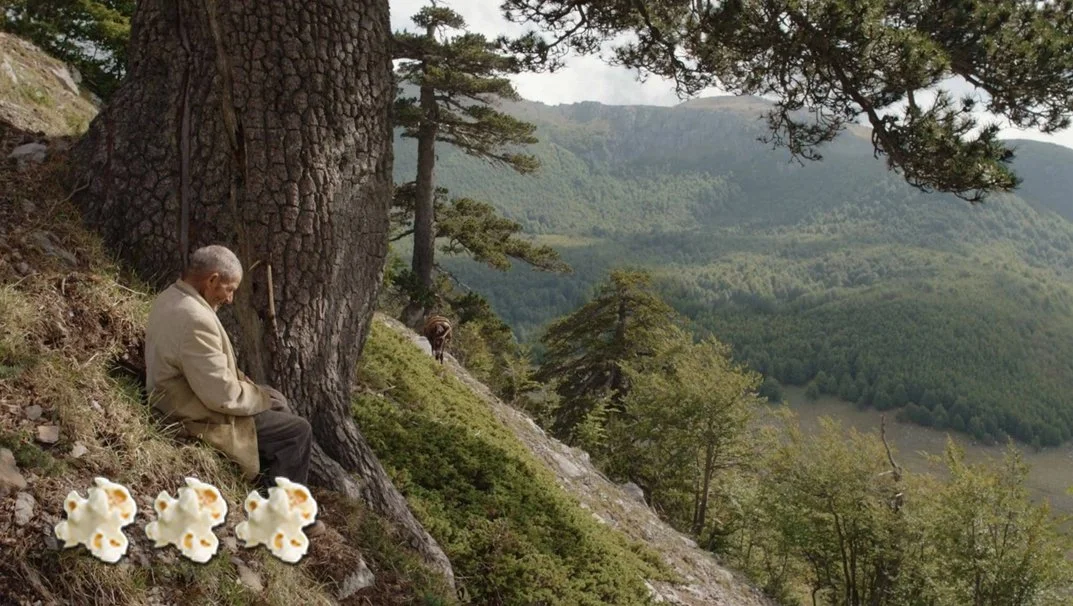Il Buco
Frammartino Digs Deep, But Barely Scratches the Surface
Michelangelo Frammartino’s Il Buco (“The Hole”) is a meditative journey into the center of the earth, replete with some of the year’s most gorgeous visuals and transportive sound design. The film recreates a real cave expedition in 1961, Calabria, Italy—observed by a weathered shepherd (Paolo Cossi) and his livestock, with whom he converses in guttural bursts that echo across the rocky hillsides.
Frammartino’s last feature was the quietly absorbing Le Quattro Volte (2011): unhurried, painterly cinema, much like Il Buco. For those who need drama, however, this intentionally opaque and plotless film may prove challenging: Frammartino—in tandem with cinematographer Renato Berta and sound designer Simone Paolo Olivero—delivers cinematic poetry … but ultimately, there’s more surface than depth.
Il Buco observes the spelunkers from a distance, almost as if they’re horror movie characters on an ill-fated voyage. Instead of hearing their dialogue or feeling like part of their struggle we focus on close-ups of our shepherd’s corrugated face, lit by sunsets and firelight. Yes, the old man’s face is expressive and yes, his life is surely a metaphor for times gone by—but are we meant to identify with this wizened local, as he observes brazen strangers chasing a subterranean mystery? The stage seems set for confrontation, but the denouement is purely metaphorical.
This film should be labeled “Audience Participation Required.” Like last year’s Gunda (2020)—another dialogue-free, visual poem that shares an affinity for farm animals—Il Buco relies on the viewer to provide an internal narrative … but where Gunda provided dramatic subtext with the threat of imminent slaughter, Il Buco is deliberately more abstract. Cows peer into an abyss with casual curiosity; a soccer ball is juggled across a chasm’s opening; a blazing flare illuminates a slow descent into darkness; a man sleeps, cuddled next to a statue of Christ. At its most playful, Il Buco studies natural contrasts: claustrophobic corners and wide expanses, the turbulence of youth and the clarity of sunset years, the vastness of the world and the insignificance of man. Set during Italy’s postwar “economic miracle”—briefly featured in a B&W newscast on an old TV—this adds a potent environmentalist angle to the film’s existential quest; the cave may well be symbolic of untapped wealth, potential destruction and/or those uncharted mysteries within the human soul. What to ponder is up to the viewer.
Ironically, Il Buco loses steam when its metaphors become too literal. At first, its lack of explicitly intended meaning is part of its charm—but even at an expeditious 93 minutes, Frammartino’s symbolism feels increasingly obvious as the film progresses, a staged quality that cheapens its initial spontaneity. That said, this film still stands out because of its searing beauty. From the very first shot, seen from inside the crevasse’s gaping maw, the audience knows they’re in for something special. Practically every frame is a standalone work of art. And like visiting an actual museum, your personal takeaway will more than likely be equivalent to your patience, your appreciation of history and your imagination. At best, Frammartino’s latest opus hints at the depths of existence—and the futility of trying to fathom it—with an unparalleled sensory experience. Before you begin your descent, try to shut off your left brain and embrace the pure power of observation.
Originally reviewed for IONCINEMA on October 11th at the 2021 New York Film Festival. You can read the original here.
93 Min.


